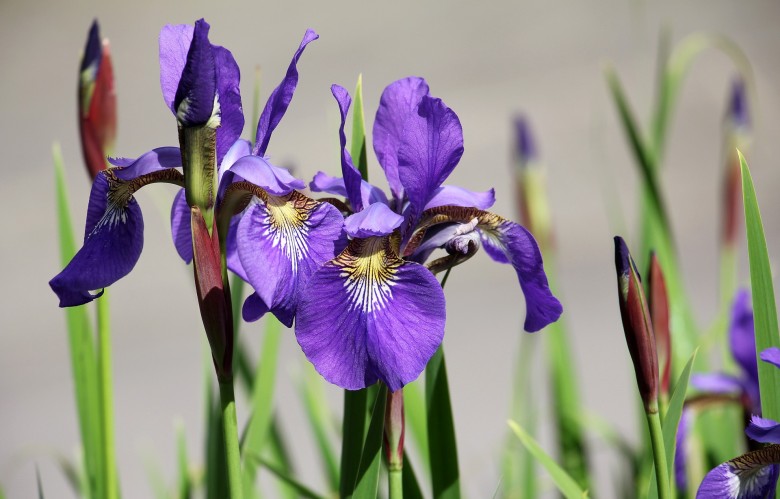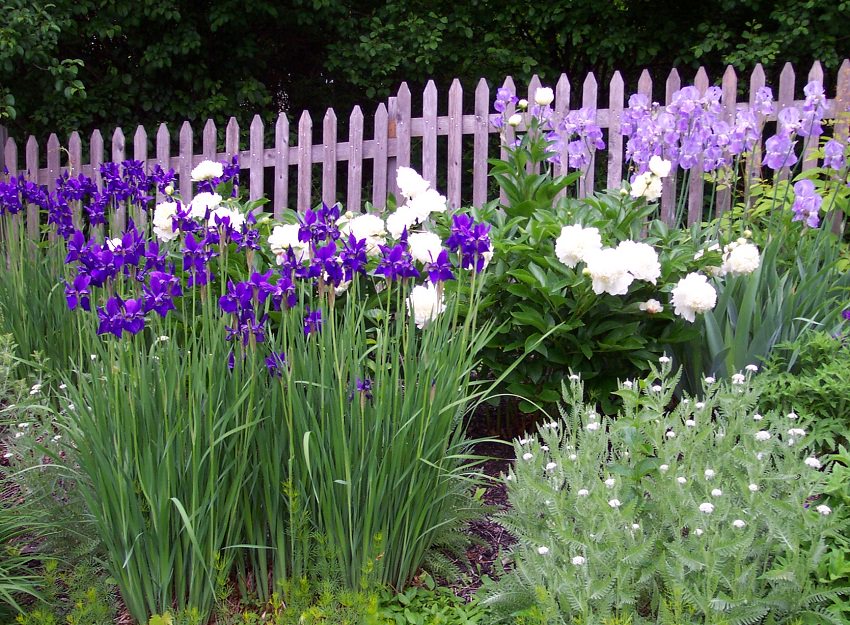Choosing the Ideal Location for Your Iris Blooms
Selecting the right spot for your iris flowers is crucial for their success. When deciding where to plant iris flowers, consider the amount of sunlight they will receive. Most iris varieties require at least six hours of direct sunlight per day, although some can tolerate partial shade. Soil is another critical factor, as iris flowers prefer well-draining soil with a pH between 6.0 and 7.0. Additionally, iris flowers have specific moisture requirements, with some varieties thriving in wet conditions and others preferring dry soil. By understanding these factors, you can choose the perfect location for your iris blooms and enjoy their beauty for years to come.
Understanding Iris Flower Types: Which Variety Thrives Where
When it comes to choosing the right iris flowers for your garden, understanding the different types and their specific growing conditions is crucial. Bearded irises, for example, thrive in well-draining soil and full sun, making them ideal for areas with low rainfall. Japanese irises, on the other hand, prefer moist soil and partial shade, making them perfect for bog gardens or areas with high humidity. Louisiana irises, with their vibrant colors and exotic appearance, require acidic soil and consistent moisture, making them well-suited for wetland areas or containers. By understanding the unique requirements of each iris variety, you can choose the right type for your specific climate and soil conditions, ensuring that your iris flowers thrive and bloom beautifully.
How to Select the Perfect Soil for Your Iris Flowers
When it comes to growing iris flowers, the right soil can make all the difference. Iris flowers prefer well-draining soil that is rich in organic matter, with a pH level between 6.0 and 7.0. To achieve optimal growth and blooming, it’s essential to choose a soil type that meets these requirements. For example, if you have heavy clay soil, consider adding organic matter such as compost or peat moss to improve drainage. If you have sandy soil, add organic matter to increase the soil’s water-holding capacity. Additionally, consider the nutrient content of your soil, as iris flowers require adequate levels of nitrogen, phosphorus, and potassium to thrive. By selecting the right soil type, pH level, and nutrient content, you can create an ideal environment for your iris flowers to grow and bloom beautifully.
Considering Climate and Hardiness Zones for Iris Flowers
When deciding where to plant iris flowers, it’s essential to consider the climate and hardiness zones of your region. Iris flowers are adaptable to various climates, but some varieties thrive better in certain conditions. For example, bearded irises are more tolerant of heat and drought, making them ideal for warm climates, while Japanese irises prefer cooler temperatures and high humidity, making them suitable for cooler climates. Louisiana irises, on the other hand, thrive in warm and humid conditions, making them perfect for southern regions. By understanding the hardiness zones and climate requirements of different iris varieties, you can choose the right type for your region and ensure they grow and bloom beautifully. Additionally, consider factors such as frost tolerance, wind protection, and moisture levels to create an ideal environment for your iris flowers. By doing so, you can enjoy their beauty and fragrance for years to come, regardless of where you live.
Planting Iris Flowers in Containers: A Guide to Success
When deciding where to plant iris flowers, consider using containers to add flexibility and versatility to your garden design. Container-grown iris flowers can thrive in small spaces, such as balconies, patios, or rooftops, and can be easily moved to different locations to optimize sunlight and temperature conditions. To ensure success, choose a container that is at least 6-8 inches deep and has good drainage holes to prevent waterlogged soil. Select a high-quality potting soil that is specifically designed for iris flowers, and consider adding organic matter such as compost or peat moss to improve soil structure and fertility. When planting, make sure the rhizome is exposed to the sun and the roots are spread out evenly in the container. Water regularly, but avoid overwatering, and fertilize sparingly to promote healthy growth and blooming. By following these tips, you can enjoy beautiful and thriving iris flowers in containers, regardless of where you live or the size of your garden.
Companion Planting: What to Plant with Your Iris Flowers
When deciding where to plant iris flowers, consider the benefits of companion planting to create a harmonious and thriving garden ecosystem. By pairing iris flowers with complementary plants, you can enhance their growth, health, and beauty. For example, planting low-growing groundcovers like creeping thyme or sweet woodruff around the base of iris flowers can help suppress weeds and retain moisture. Marigolds and nasturtiums, with their bright colors and strong scents, can deter pests and attract beneficial insects, while herbs like lavender and rosemary can provide a fragrant and attractive backdrop for iris blooms. Additionally, consider planting iris flowers alongside other perennials like daylilies, coneflowers, or black-eyed susans, which can provide structural support and create a stunning display of color and texture. By choosing the right companion plants, you can create a vibrant and resilient garden that showcases the beauty of your iris flowers.
Common Mistakes to Avoid When Planting Iris Flowers
When deciding where to plant iris flowers, it’s essential to avoid common mistakes that can hinder their growth and blooming. One of the most critical mistakes is overwatering, which can lead to root rot and other problems. Make sure to plant iris flowers in well-draining soil and avoid watering them excessively, especially during the winter months. Underwatering is also a common mistake, as iris flowers need consistent moisture to thrive. Another mistake is poor soil preparation, which can lead to nutrient deficiencies and poor growth. Before planting, ensure the soil is rich in organic matter and has the right pH level for your specific iris variety. Additionally, avoid planting iris flowers too deeply, as this can cause the rhizome to rot. By being aware of these common mistakes, you can ensure your iris flowers receive the right conditions to thrive and provide beautiful blooms for years to come.
Tips for Maintaining Healthy and Thriving Iris Flowers
To keep your iris flowers blooming beautifully, regular maintenance is essential. One of the most critical tasks is watering, which should be done consistently but not excessively. Aim to provide about 1-2 inches of water per week, either from rainfall or irrigation. Fertilizing is also crucial, as iris flowers require nutrients to produce healthy blooms. Use a balanced fertilizer in the spring and again after blooming to promote healthy growth. Deadheading, or removing spent blooms, is another vital task to encourage iris flowers to produce more blooms and prevent seed production. Additionally, consider dividing and replanting your iris flowers every 3-4 years to maintain their health and vigor. By following these simple tips, you can enjoy stunning iris blooms for years to come and know exactly where to plant iris flowers for optimal growth.






